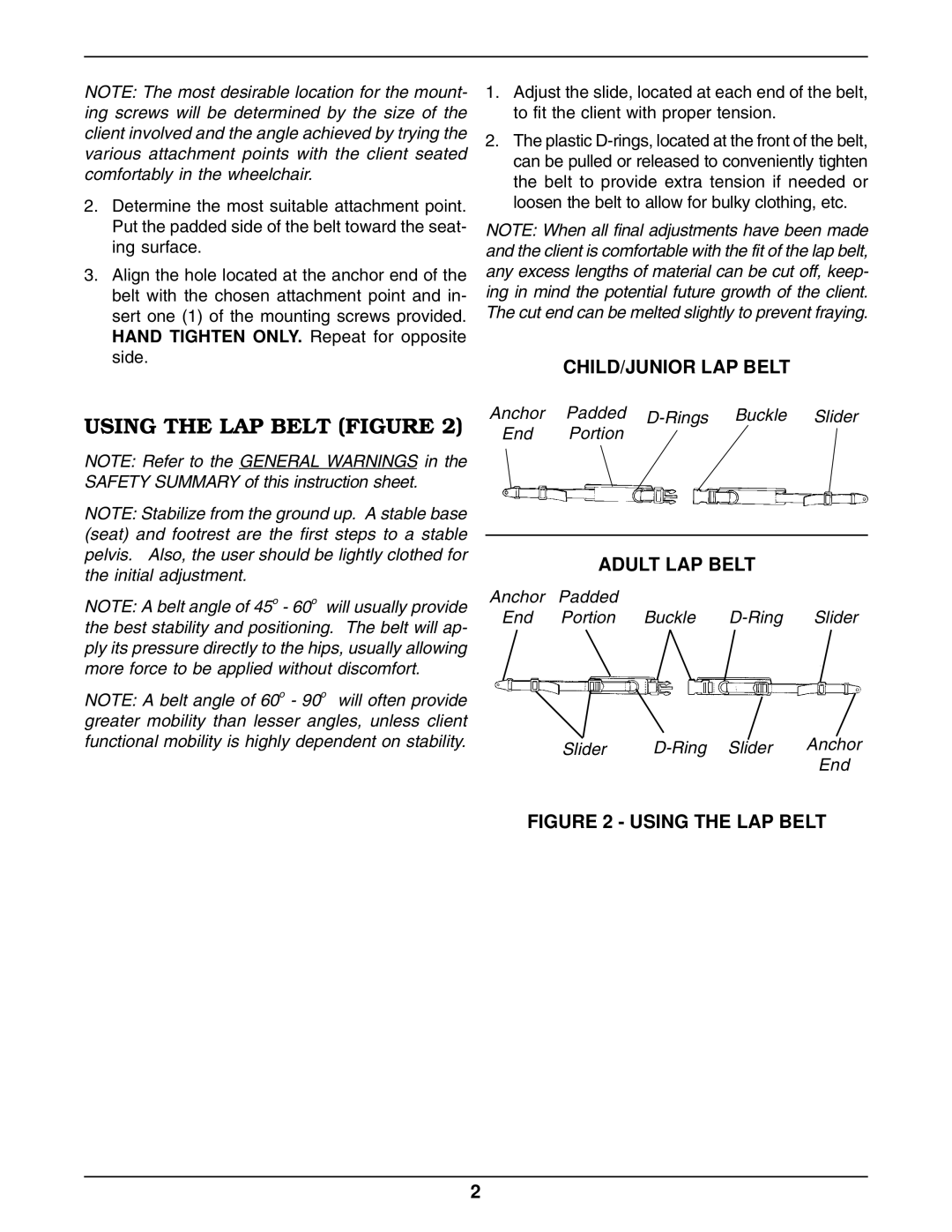
NOTE: The most desirable location for the mount- ing screws will be determined by the size of the client involved and the angle achieved by trying the various attachment points with the client seated comfortably in the wheelchair.
2.Determine the most suitable attachment point. Put the padded side of the belt toward the seat- ing surface.
3.Align the hole located at the anchor end of the belt with the chosen attachment point and in- sert one (1) of the mounting screws provided. HAND TIGHTEN ONLY. Repeat for opposite side.
USING THE LAP BELT (FIGURE 2)
NOTE: Refer to the GENERAL WARNINGS in the SAFETY SUMMARY of this instruction sheet.
NOTE: Stabilize from the ground up. A stable base (seat) and footrest are the first steps to a stable pelvis. Also, the user should be lightly clothed for the initial adjustment.
NOTE: A belt angle of 45o - 60o will usually provide the best stability and positioning. The belt will ap- ply its pressure directly to the hips, usually allowing more force to be applied without discomfort.
NOTE: A belt angle of 60o - 90o will often provide greater mobility than lesser angles, unless client functional mobility is highly dependent on stability.
1.Adjust the slide, located at each end of the belt, to fit the client with proper tension.
2.The plastic
NOTE: When all final adjustments have been made and the client is comfortable with the fit of the lap belt, any excess lengths of material can be cut off, keep- ing in mind the potential future growth of the client. The cut end can be melted slightly to prevent fraying.
CHILD/JUNIOR LAP BELT
Anchor Padded
End Portion
ADULT LAP BELT
Anchor Padded
End Portion Buckle
Slider | Anchor | |
|
| End |
FIGURE 2 - USING THE LAP BELT
2
